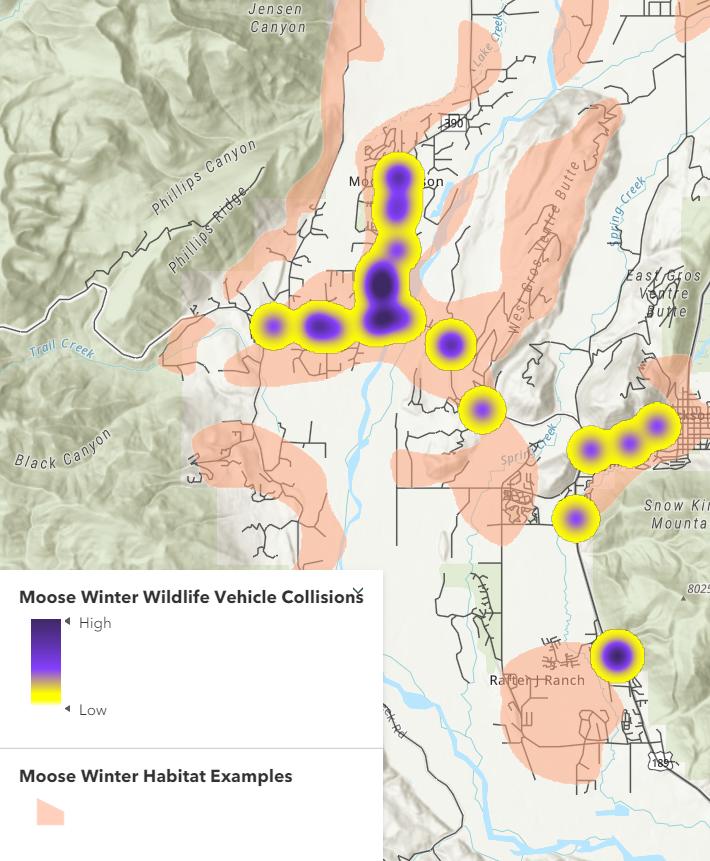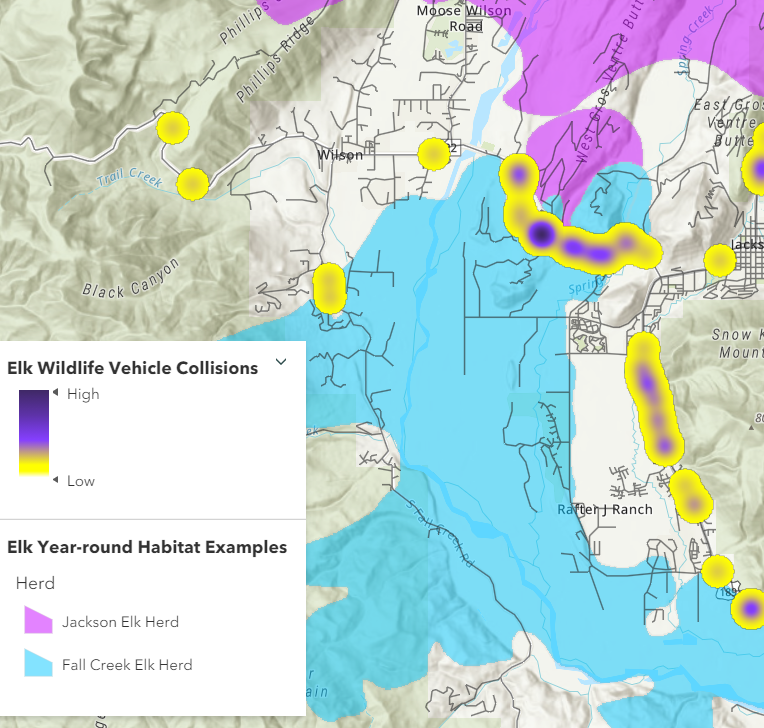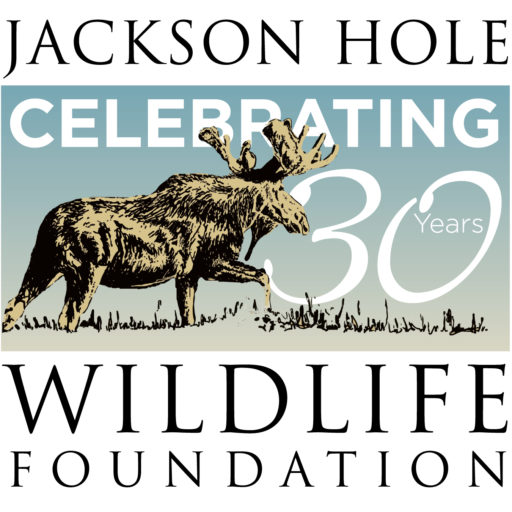Roadways and Wildlife
An elk herd crosses Highway 390 near the wilson bridge
Moose killed in the Snake River Corridor by vehicles between 2018 and 2019
Cost of an average collision with a moose
Wildlife-Vehicle Collisions are Common in the Snake River Corridor
Wildlife-vehicle collisions (WVCs) are a global problem. In Teton County, Wyoming, it is not unusual for at least 300 animals to be hit and killed by vehicles each year.
The Snake River Corridor is considered a “hotspot” for wildlife vehicle collisions. Between 2018 and 2019 at least 10 moose were killed by vehicles on Highways 390 and 22 alone within a mile of the Snake River. The majority occur at night and during the winter months.
The Snake River Corridor is not unique. Roads running through riparian zones often experience as disproportionally high number of WVCs.
Support our Work
Why Riparian Zones?
So why do so many WVCs occur in riparian zones?
The answer is simple. Not only do riparian zones like the Snake River Corridor attract wildlife by providing excellent habitat, but human infrastructure patterns, like the construction of roads and cities, are also often congruent with rivers.
Add this to the fact that land bordering rivers is often flat and well-graded for road construction and you have a recipe for a wildlife-vehicle collisions.
Moose WVC hotspots
Elk WVC hotspots


Note: Highway 22 is a barrier to elk movements. Elk collared on the South Park Wildlife Management Area feed ground (blue polygon) largely remain south of Highway 22 while elk collared on the National Elk Refuge largely remain north of Highway 22 (purple polygon).
What can I do?
A myriad of techniques reduce the impact of roads and traffic on wildlife, some are more effective than others. On Wyoming Highway 390, alternatives used include mobile digital variable message signs, reduced nighttime speeds, radar speed signs, and life-size wildlife silhouettes. As traffic increases on this road due to increasing visitors and residential development, the landscape permeability for wildlife is reduced and new mitigation measures may need to be explored.
In the meantime, as drivers we can all do our best to follow the nightly speed limits when we are traveling through known WVC hotspots. Be alert, especially at night and especially during winter months and migration!

